The iris, named after the Greek goddess of the rainbow, is a genus of around 300 species of flowering plants with vibrant, awe-inspiring blooms.
Their beautiful displays of color have made these flowers are popular with florists and gardeners alike, and since around 1469 BCE, the iris has become a staple flower in most outdoor spaces.
Let’s take a look through some of the most popular species of iris and their defining characteristics.
1. Bearded Iris
The bearded Iris is arguably the most popular species of the Iris plant.
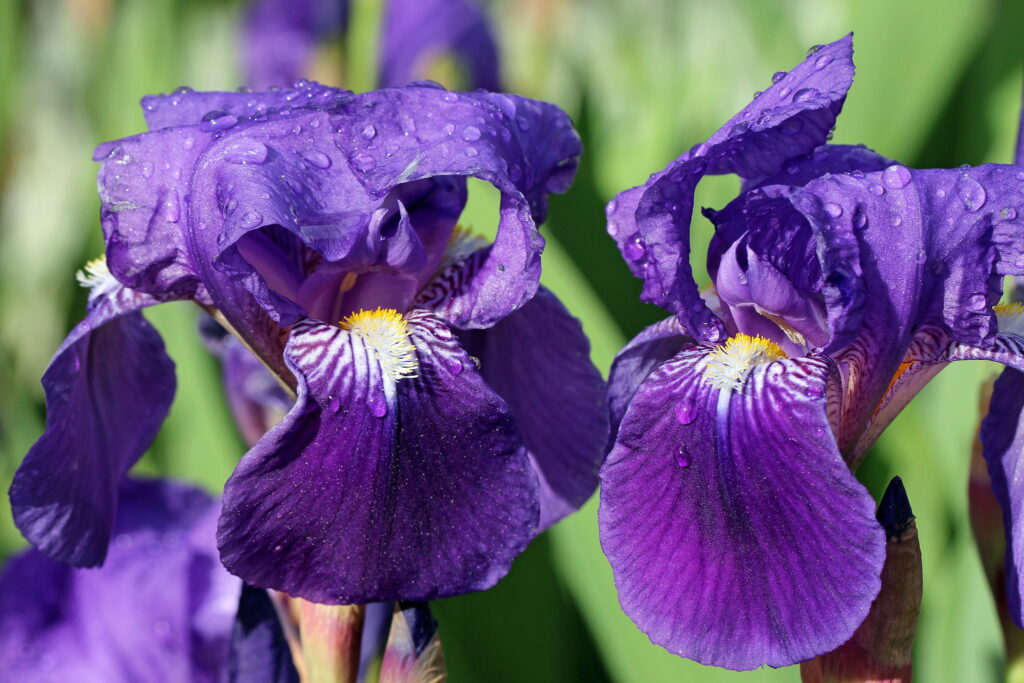
This iconic plant gets its name from its fuzzy-looking beard that resembles a tongue. These beloved flowers, sometimes called the German Iris, can be found growing in almost every continent in the wild; they’re adaptable and hardy, so you’ll find these everywhere from coastlines to alpine meadows.
The bearded Iris tends to bloom in mid to late spring, and they’re most recognizable for their cascading petals, flat foliage, and rainbow colors, including red, yellow, violet, blue, and many more.
The bearded iris grows best in well-drained soil with access to full sun. At least six hours of sunlight per day is required to produce a healthy bearded iris.
2. Yellow Iris
The yellow iris, sometimes called the ‘yellow flag,’ is a species of iris native to Europe, Northwest Africa, and Western Asia. The yellow iris is a water iris, meaning you’ll usually see it growing by ponds with lots of sunlight.
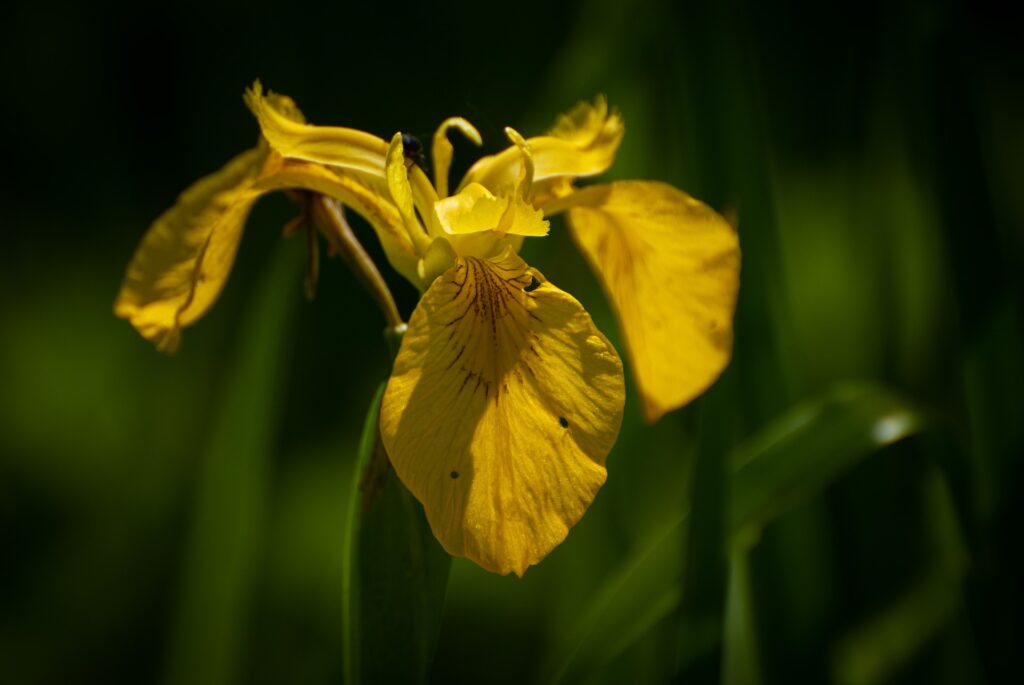
Some say the yellow iris closely resembles a daffodil. It boasts some beautiful green foliage, intercepted by its vibrant, yellow flowers, which bloom in late spring. These plants are ideal for wildlife gardens or areas with access to a pond or lake.
The yellow iris is attractive to wildlife, particularly bees, and it prefers rich soil that’s heavy and moist. This plant grows best in full sun or partial shade, but it’s notoriously hardy and can grow well in a variety of conditions.
This plant is toxic to cats, dogs, and people, so make sure to plant the yellow iris somewhere secure.
3. Blue Iris
The blue iris, or Iris Spuria, is a stunning species of iris that, despite the name, is available in a wide range of colors, including halos, bitones, and bicolors. These are the tallest of all the irises and can reach heights of up to 5ft.
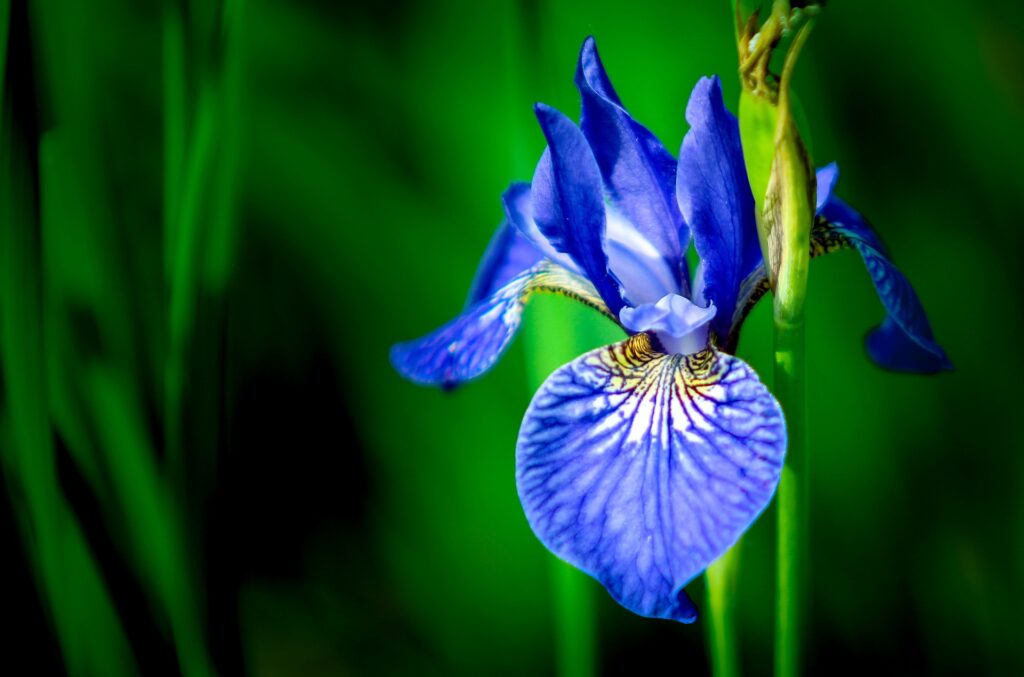
Blue irises often grow in clumps, and they have narrow leaves of up to 30cm long. Each flower stalk usually produces around 3 to 4 buds per branch, but this may vary depending on region and climate.
These irises grow best in full sun, with access to well-drained, slightly alkaline soil. They can tolerate partial shade; however, they may become more susceptible to disease and may not flower as well.
Once your blue irises are well established, they’ll become drought resistant. You can plant them in mid to late summer, but they tend not to bloom the first year after planting. Some cultivars of the blue iris include:
- ‘Lucky Devil’ (Blue Iris)
- ‘Missouri Rainbows (Blue Iris)
- ‘Sahara Sands’ (Blue Iris)
4. Netted Iris
Next up, we have the netted iris. The netted iris (iris reticulata), sometimes called the Dutch or Irish iris, is a dwarf variety native to Eastern Europe. The netted iris blooms in the early spring, and it is famous for its small, fragrant flowers which range from blue to violet.
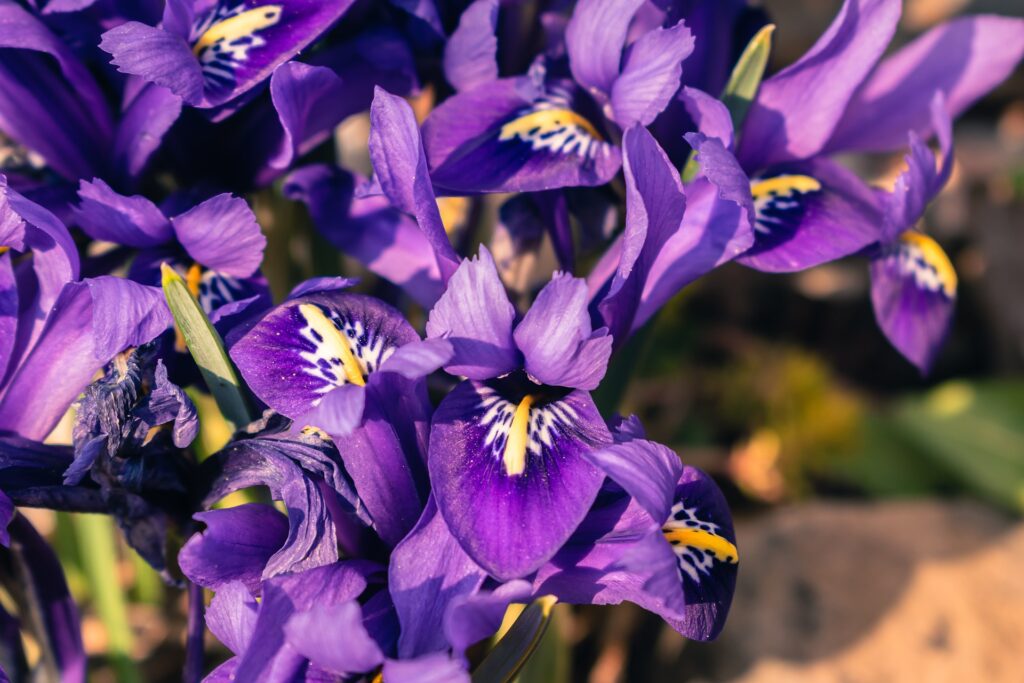
The netted iris also has three other outer flowers and three inner erect flowers, which are marked by their striped white and yellow on the falls.
These irises are usually planted in borders or in containers, and they also look great when planted in woodland areas or near local ponds or streams.
The leaves of the netted iris are delicate, and they disappear during the summer. The netted iris is tolerant to deer and droughts, and it’s less likely to develop bacterial or fungal issues compared to other iris plants.
In the wild, the netted iris can be found by mountains and coastlines, and it grows best when it has access to full sunlight and around 12 inches of growing room. This iris can be poisonous to cats, dogs, horses, and humans, and it can cause contact dermatitis.
5. Dwarf Crested Iris
The dwarf crested iris, or iris cristata, is a low-growing perennial known for its clusters of small, pointy leaves. The dwarf crested iris has blue-violet flowers, which are marked by their distinctive striped bands of yellow, white, or purple.
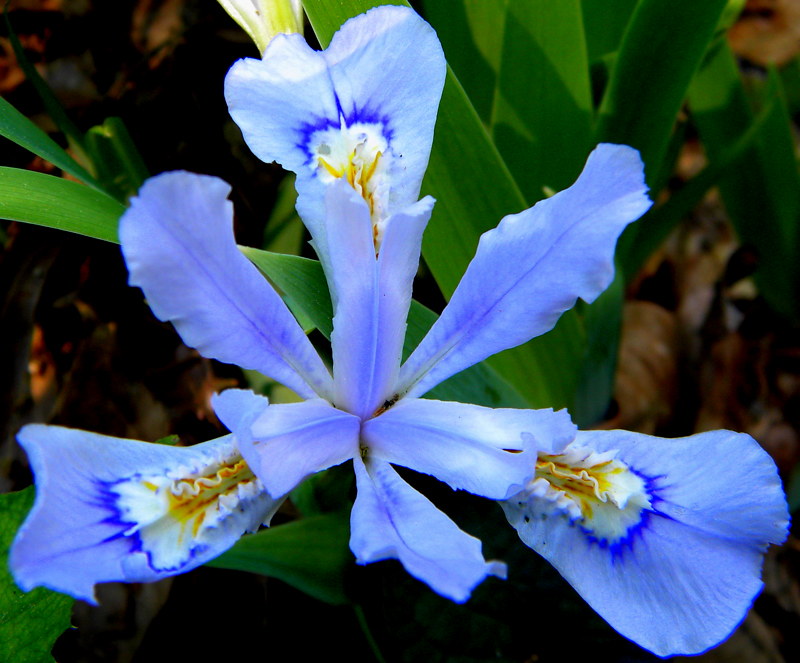
Their beards, or crested ridges, appear alongside the band of the flower, and these irises tend to grow no taller than six inches.
The dwarf crested iris prefers shade or partial shade and an acidic but moist, well-drained soil. These irises are tolerant to heat, and they can be used to attract bees and hummingbirds in almost any garden.
They tend to bloom in March, April, and May, and in the wild, they’ll grow in wooded habitats with partial sunlight.
6. Siberian Iris
Next on our list is the Siberian iris. The Siberian iris, or Iris sibirica, is native to Europe and Central Asia. This plant tends to bloom in May until late June, and it comes in a wide variety of colors, including white, lavender, purple, yellow, pink, blue, and more.

The Siberian iris has slender, grassy foliage with branched stems that can hold up to five flowers. The stems can reach heights of 1.2m tall, and they tend to grow best with access to full sunlight and no competition from neighboring plants. Some popular cultivars of the Siberian iris include:
- Papillon
- Silver Edge
- Butter and Sugar
- Snowcrest
- So Van Gogh
- Fond Kiss
- Salamander Crossing
- Stephen Wilcox
- Pansy Purple
- Wealden Carousel
- Lavender Fair
- Shrawley
7. Japanese Water Iris
The Japanese water iris, or iris ensata, are the perfect addition to any water garden or Japanese garden, with access to pools or streams. These irises have distinctive orchid-like flowers that are either flat or ruffled, and they tend to be beardless.
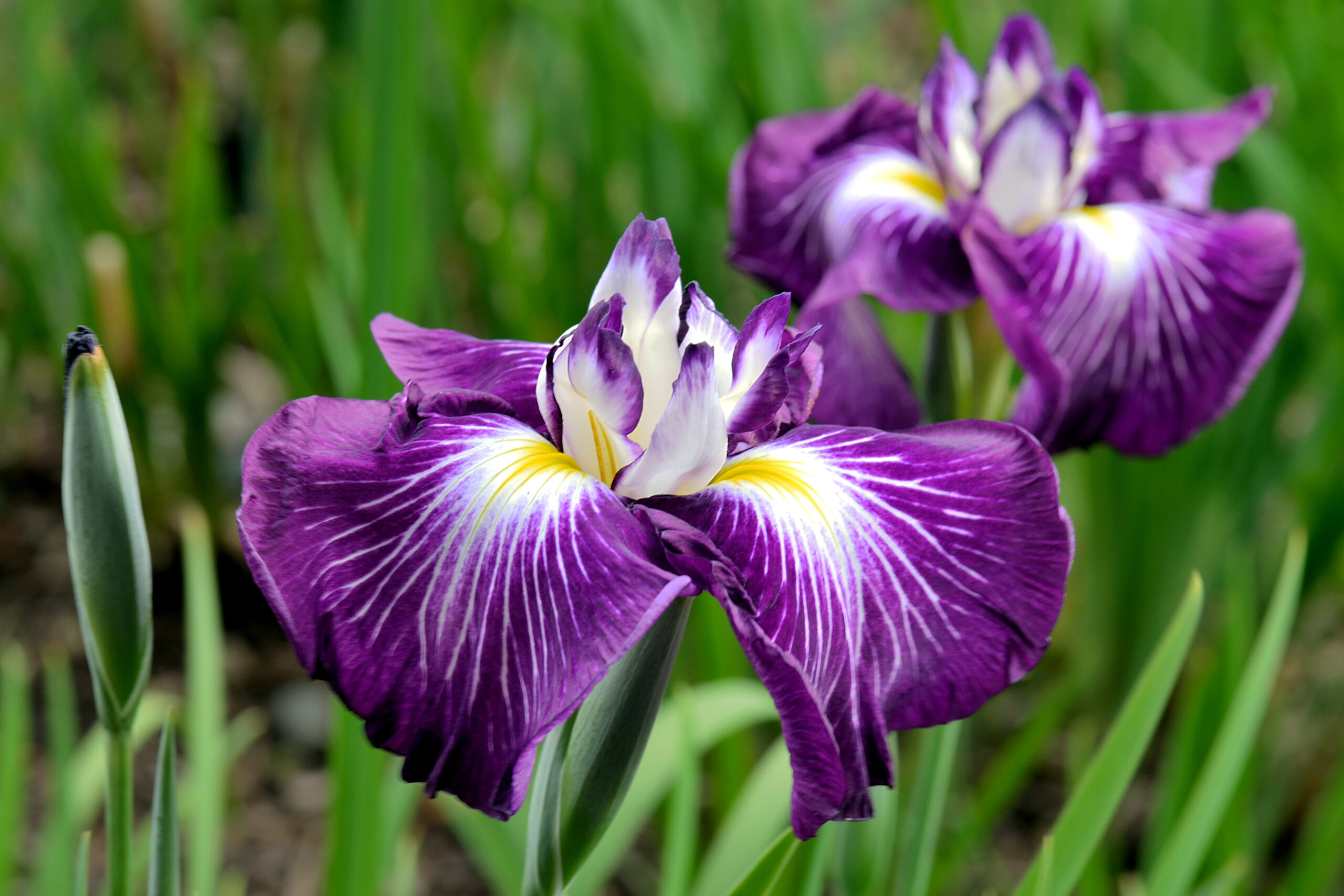
Their sword-shaped leaves grow up to 60cm long, and they’ve been cultivated in Japan for well over 500 years. These irises will bloom between early to mid-summer, making them the last of the irises to bloom.
However, some varieties of the Japanese water iris can be mid or late-season. They often reach heights of three to four feet, and their flowers are flatter than most other common varieties.
These irises are easy to grow and will thrive in conditions with access to full sun or partial shade. They require a rich, moist acidic soil, and they love being in standing water. For this reason, your soil should be moisture-retentive and particularly boggy in the winter.
8. Dwarf Bearded Iris
The dwarf bearded iris, or iris pumila, are small, fragrant varieties of the iris flower. These compact irises usually grow no taller than 15cm, and they make a wonderful addition to any garden border, rockery, or patio.

These irises have similar flowers to tall bearded irises, but they tend to bloom much earlier, in early spring, late March, and April. In the wild, the dwarf bearded iris can grow in diverse conditions, including high mountain pastures and temperate Geek hillsides.
Some types of bearded irises prefer to live next to cool water, while others will prefer warmer, drier conditions. These irises have been cultivated since classic times, and they’ve appeared in art and literature for over two centuries.
These flowers may be dainty, but they’re hardy enough to grow in a range of climates, and they’re notoriously easy to care for.
9. Louisiana Iris
The Louisiana iris includes five species of iris, native to Louisiana and southeastern United States. These plants are late-flowering and can be found in a wide range of colors; in fact, it has one of the most diverse color palettes of all the irises.
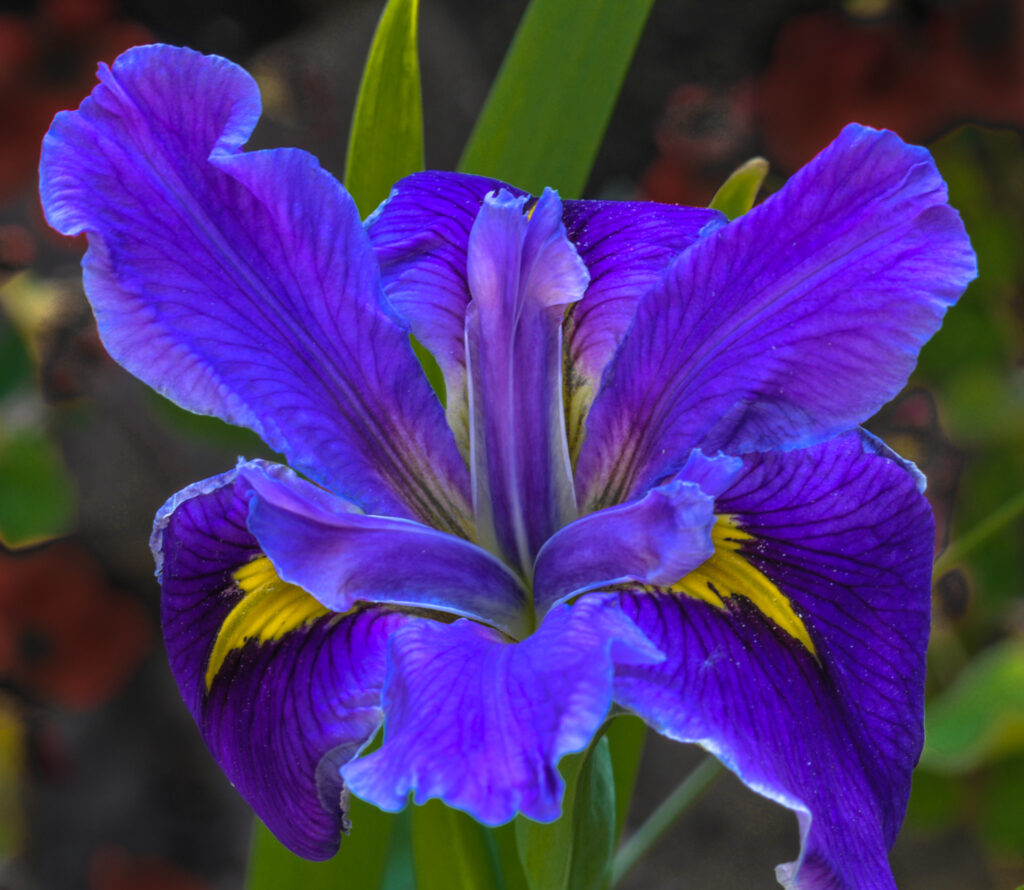
Most species of the Louisiana iris prefer to live in boggy conditions, such as on the bank of a natural pond or watercourse. These species thrive when they grow near full or partial sun, and if they can be planted in shallow water, as long as it’s no more than four inches deep.
These irises are heavy feeders, and need constant watering. They can be used to attract bees and hummingbirds, and they have a rapid growth rate.
Louisiana irises have huge blooms, of between four to six inches, and they can reach heights of up to three feet. Some species of Louisiana iris include:
- 1. Iris brevicaulis
- 2. Iris fulva
- 3. Iris hexagona
- 4. Iris giganticaerulea
- 5. Iris nelsonii
Final Thoughts
The iris is one of the most diverse plants in the world. With a history that spans as far back as 82 million years, these plants have evolved to include small and large varieties, hardy types, early and late bloomers, and most come in a dazzling array of colors.
With plenty of species to choose from, there’s an iris to suit every climate, personal taste, and gifting occasion.







